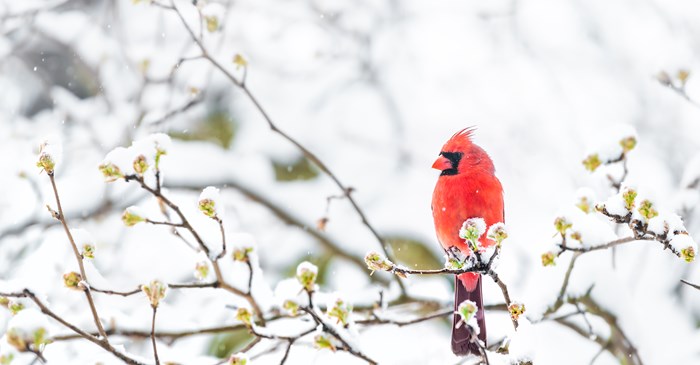Just because it’s winter doesn’t mean it’s time to pack in the binoculars and board up the birdhouse. In fact, no matter where you live in North America, birds abound! With the right seed mixes in your bird feeders, you’ll have no lack of fine feathered friends to keep you cozy until spring.
Here’s a breakdown of what you can expect to see based on where you live:
Northeastern and Mid-Atlantic States:
Keep an eye out for the friendly Black-capped Chickadee, Tufted Titmouse, the spectacularly colored Northern Cardinal, all manner of finch, sparrows, woodpeckers and jays; also look for the American Robin, Baltimore Oriole, Red-winged Blackbird, Mourning Dove—and even the Ruby-throated Hummingbird.
Southeastern States:
In addition to visitors from the north (who will be looking for water in addition to food), you’ll see the Carolina Wren, Carolina Chickadee, Tufted Titmouse, Pygmy Nuthatch, several hummingbird species, mockingbirds, woodpeckers and doves.
Southwestern States:
Backyard visitors will include doves and woodpeckers (especially the ladder-backed), the Great Roadrunner, Curve-billed Thrasher, Dark-eyed Junco, Bridled Titmouse, Western Bluebird, several towhee species, emerald green Anna’s and black-chinned hummingbirds, grosbeak, the sunset-liveried Western Tanager, scaled quail, and purple, house, and Cassin’s finches.
Pacific Northwest:
Winter’s damp weather is no deterrent to the most familiar backyard birds in the northern Pacific states. Count on favorites like thrush, western and mountain bluebirds, American robin, beautiful blue Steller’s jay, Anna’s and the coppery-colored rufous hummingbird, several woodpecker species, sapsuckers, several chickadees, finches and evening grosbeak.
Remember that water is just as important as food in most winter climes, and with the right seed mixes you’ll have no lack of fine feathered friends to keep you cozy until spring. Start with a well-rounded crowd-pleaser like Lyric Wild Bird Mix or Lyric Supreme Mix, and zero-in on your favorite species with one or more specialty mixes – geared toward specific species.
For the data-minded, try visiting eBird, a joint effort of The National Audubon Society and the Cornell Lab of Ornithology, for loads more detail – and even an opportunity to add your bird-watching milestones to the national database.
